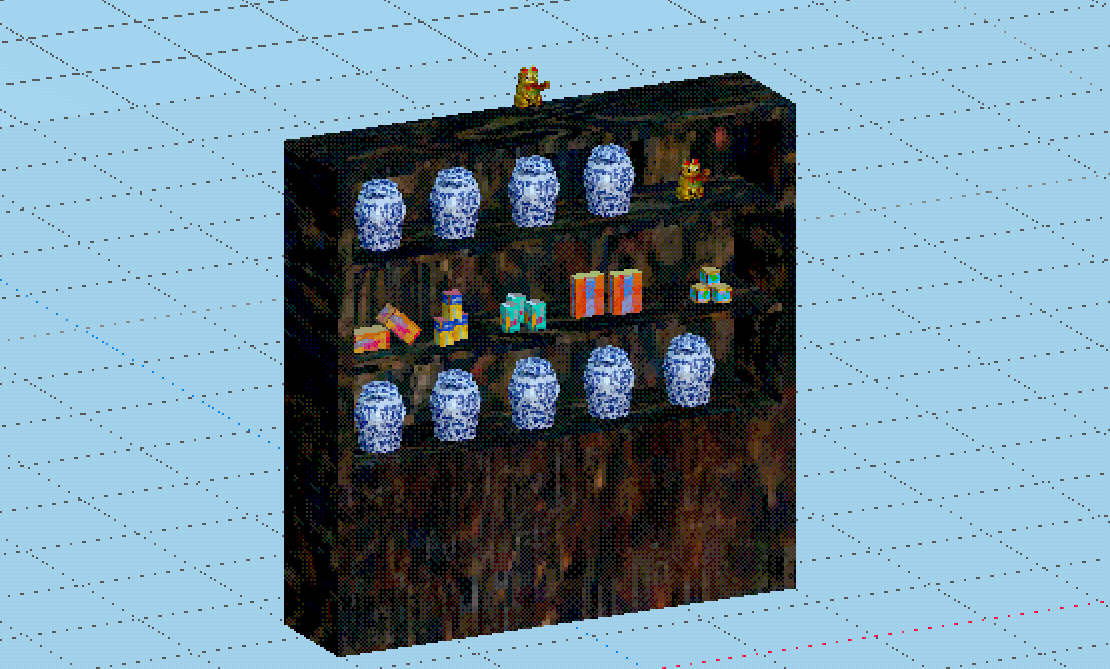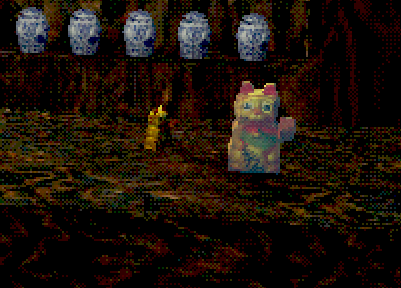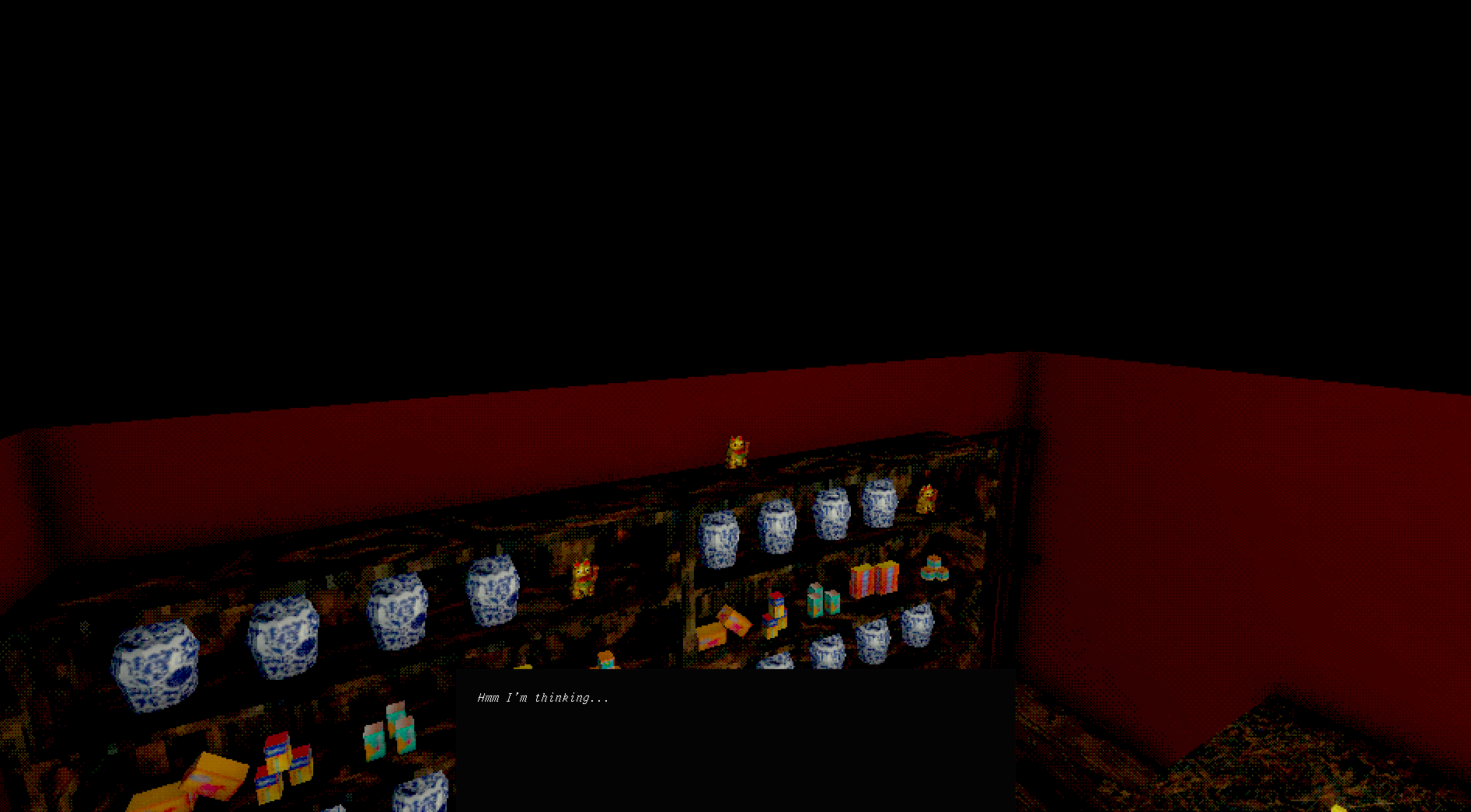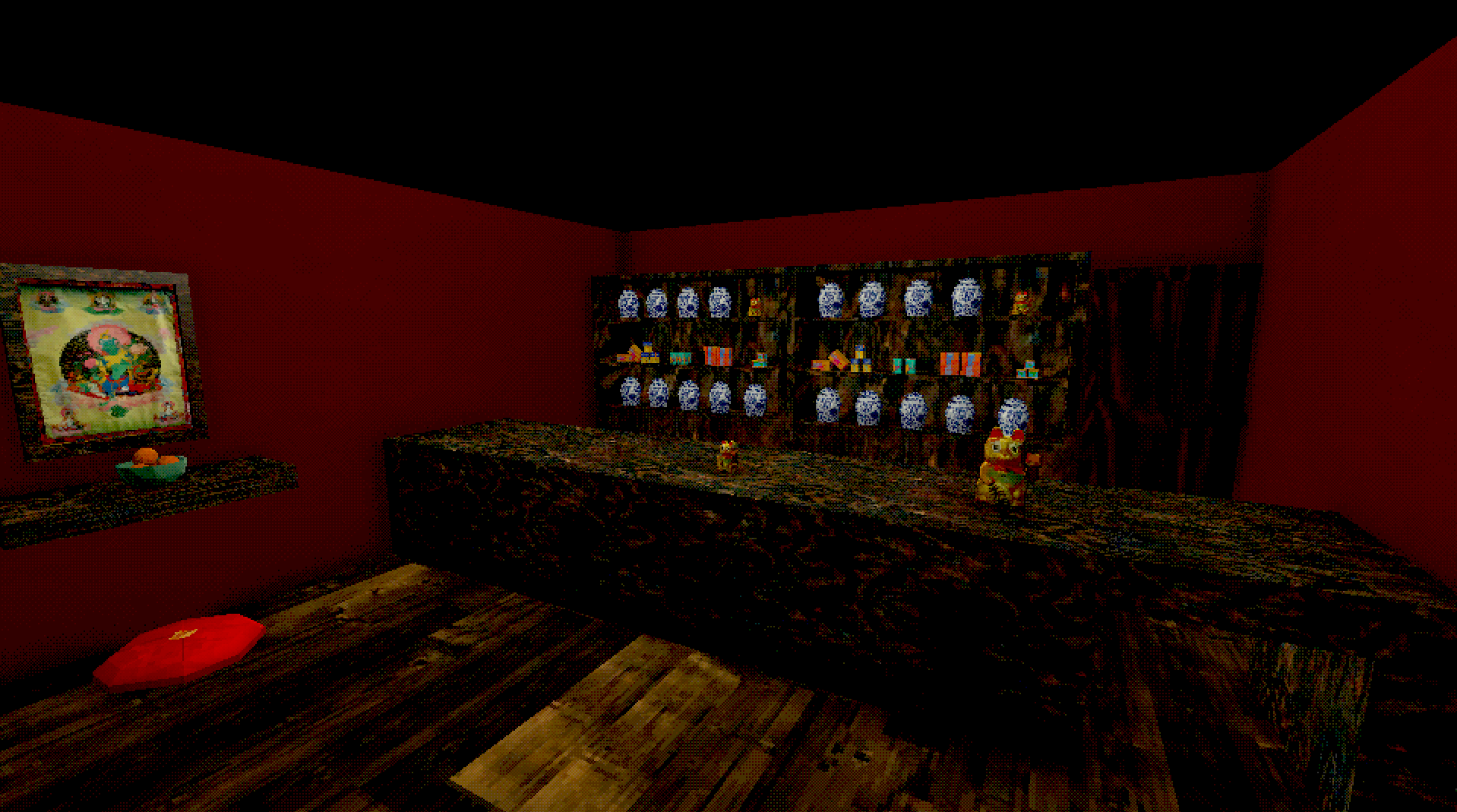Fugue Devlog 2: Interior Environments and Interaction
A lot of progress this weekend. I put together some larger objects, such as this pharmacy cabinet:

And built out an interior test environment to figure out the built-in physics system (mainly collisions) and develop player movement/control and object interaction. Not sure if I have the best practices down there (e.g. the walls are separate planes, when I should maybe use an inverted cube. But I’m happy with out it turned out:
The player movement and control still need a lot of tweaking. I’m not sure of the best relationship between the player direction and camera direction…this is easier to figure out on console because you have joysticks to control each separately, but not so clear on PCs.
The object interaction using raycasting (key for object interaction/talking to NPCs) was very straightforward, as was object proximity detection (for triggering events when you come near something, for example).

In general I’m getting more familiar with Godot and the workflow with Blender. So far I’m really enjoying Godot; a few small snags here and there but overall it’s been intuitive and powerful. I haven’t yet felt like I needed to do any clunky or hacky; there’s always been a clean solution.
I originally anticipated using Rust as the foundation for the game (was looking at bevy originally as the framework for the game). I even set up an integration between Godot and Rust (using godot-rust). But I’ve found GDScript to be really nice, and probably performs well enough for my needs. The game logic is straightforward; any bottlenecks would probably come from graphics/rendering/etc which the scripting language wouldn’t help much with. Anyways, I’m using relatively small textures and simple models, so I’m not worried about that.
I’m currently sketching out the dialogue system. There are many different scenarios that it needs to handle; I’m hoping to design it so that it basically can run “cutscenes” (really just sequences of dialogue, animations, audio cues, etc) in addition to a more conventional choice-driven system. So I’m taking care to design a system and schema for representing dialogue scripts that will avoid painful re-writes in the future.

I’m using one of my favorite bitmap fonts here, UW ttyp0. Unfortunately it doesn’t get much bigger than this, so I’ll eventually need to find an alternative.
